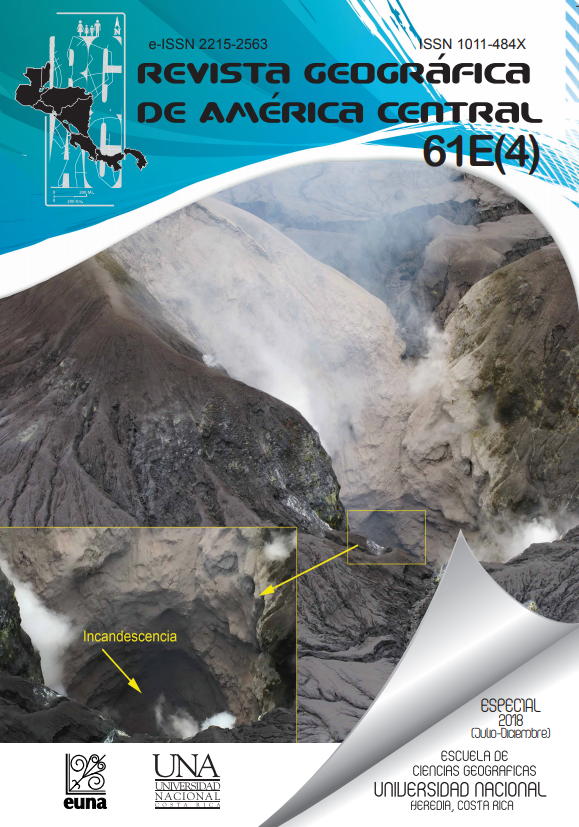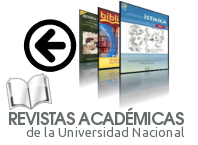Deep Geomorphological Changes at the Poás Volcano Crater; From Eruptions in April 2017
DOI:
https://doi.org/10.15359/rgac.61-4.8Keywords:
Poás Volcano, Phreatomagmatic Eruptions, Geomorphological Changes, Destruction.Abstract
In April 2017 Poás volcano produced at least 4 main eruptions that reshaped completely its active crater and surroundings. Holy Wednesday eruption impacted the west sector and its related flanks, Thursday eruptions produced more effects towards the southeast and south involving the main viewpoint and vicinity while holy Friday eruptions were directed towards the southeast and east impacting, partially, the forest. Finally, on April 22nd the last of the main eruptions occurred disappearing the rest of the standing dome and, again, affecting the viewpoint and surroundings; including volcano monitoring equipment. Changes were produced; directly at the bottom of the crater and on the dome while sectors near that cavity, were transformed mainly by infilling of materials ejected from the two mentioned structures. This essay offers a description of the main materials emplaced in each sector, their physical characteristics and coverage. This work will depict a comparative vision of previous geomorphological conditions with the current eruptive period. Various photographic sequences; from different angles and with spatial references, dimension and orientation will help to assess the magnitude of changes generated by this recent activity and its implications for the eruptive future of this volcano. The areal framework of impact does not exceed 2 kms; from the point of emission although some references will have a larger axis. Chronologically the comparison will start from the general conditions left after the phreatic eruptions in 2006.
References
Barboza, E., Duarte, E., Fernández, E., Hernández, L., Hernández, E., Malavassi, T., Marino, M., Martínez, W., Sáenz, R. y Van der Laat (2006). Estado de actividad del Volcán Poás; marzo 2006. Boletín de prensa. Página web OVSICORI. Recuperado de file:///D:/Eliecer/Downloads/Boletin1.pdf
Duarte, E., (2017). Relleno, Sedimentación y Erosión por Erupciones Recientes del Volcán Poás. (Reporte de campo: 04 de setiembre de 2017 Recuperado dehttp://www/htdocs/vulcanologia /informeDeCampo/ 2017
Duarte, E. y Fernández, E. (junio 2007). Vulnerabilidad económica durante su cierre y espacio de preparación durante la calma. Revista entorno a la prevención, 4, 11-15
Duarte, E., Fernandez, E., Jiménez, W. (2013). Erupciones freáticas del V. Poás: Frecuencia y características. 20/07/2013. Recuperado de http://www/htdocs/vulcanologia /informeDeCampo/ 2017
Fernandez, E., Duarte, E., Sáenz, W., (1999). Acid Rain Impact at Poás Volcano During 1999. Póster presentado en el Octavo Taller Internacional De Gases Volcánicos. Organizado por The International Association of Volcanology and Chemistry of the Earth´s Interior (IAVCEI) y The commission on the Chemistry of Volcanic Gases (CCVG). Celebrado en Nicaragua y Costa Rica del 26 de marzo al 2 de abril de 2003.
Downloads
Published
How to Cite
Issue
Section
License
Proposed policy for journals offering Open Access
Authors publishing their works in the Journal acknowledge and agree to the following terms:
a) Authors retain the copyrights to their works and guarantee the Journal the right to be the first to publish their works, under the Creative Commons License Attribution-NonCommercial-ShareAlike 4.0 International, CC BY-NC-SA 4.0 International (https://creativecommons.org/licenses/by-nc-sa/4.0/deed.es), which allows others to share works upon complying with the acknowledgment of authorship and mention of the Journal as the original publisher of the work.
b) Authors are permitted to separately establish additional agreements for the non-exclusive distribution of the official edition of the work published in the Journal (for example, authors may desire to place the work in an institutional repository or incorporate it into a book that is to published elsewhere) so long they acknowledgment to recognize the Journal as the original publisher. The aforementioned additional agreements must respect the terms of the non-profit character and sharing philosophy of the original license (CC BY-NC-SA 4.0 International, https://creativecommons.org/licenses/by-nc-sa/4.0/deed.es).
c) Authors are encouraged to archive the post-print or editor/PDF version in Open Access repositories.







 REVGEO is licensed under https://creativecommons.org/licenses/by-nc-sa/4.0/deed.es
REVGEO is licensed under https://creativecommons.org/licenses/by-nc-sa/4.0/deed.es
.svg_4.png)

_(1).png)
_(1)_(1)_(1)_1.png)
(2)(1)(1)(1).png)
